What are the pickleball paddle shapes?
When you step onto the pickleball court, choosing the right paddle can make all the difference in your game. One of the key factors to consider is the shape of the paddle. The pickleball paddle shapes affect your control, power, and overall performance. But with so many different pickleball paddle shapes out there, how do you know which one is right for you?
In this guide, we’ll break down the most common pickleball paddle shapes, including elongated, standard, hybrid, extra-elongated, and widebody paddles. We’ll explain the differences between each type, how they impact your game, and help you understand which shape might be the best fit for your style of play. Whether you’re just starting out or you’re an experienced player, knowing the right paddle shape can really improve your performance on the court.
What is a Pickleball Paddle?
A pickleball paddle is a flat, rectangular-shaped tool used to hit the pickleball in the game of pickleball. It has a handle for the player to hold, and the face of the paddle is made from materials like wood, graphite, or carbon fiber. The paddle is designed to help players strike the ball, control its speed and direction, and play the game effectively. Typically, a pickleball paddle measures between 7 and 8.25 inches (177.8 – 209.6 mm) in width, 1.25 inches (31.8 mm) in depth, and 15.5 to 17 inches (39.37 – 43.18 cm) in length, which is the maximum allowed.
The weight ranges from 6.5 to 9.5 ounces (185–270 g), making it light and easy to maneuver. The core depth usually falls between 0.5 and 0.625 inches (12.7–15.9 mm). Handle lengths vary from 4 to 5.5 inches (101.6–139.7 mm), and the grip circumference typically measures between 4 and 4.5 inches (101.6–114.3 mm). These specifications make pickleball paddles durable, comfortable, and suitable for different styles of play.
What are the parts of Pickleball Paddle?
The parts of a Pickleball paddle include the face, edge guard, throat, handle, grip tape, and end cap. The face is used for hitting the ball and is typically made from materials like graphite, wood, or carbon fiber. The edge guard surrounds the perimeter of the face, protecting it from damage and helping maintain its shape. The throat connects the handle to the face and is usually made from the same material as the face.
The handle is the part a player holds during a game, and it is often made of wood, graphite, or carbon fiber. The grip tape, located on the handle, provides comfort and control when holding the paddle and is usually made from rubber or synthetic materials. Finally, the end cap, located at the bottom of the handle, protects the handle’s end and may slightly extend the length of the handle.
What are the pickleball paddle shapes?
Pickleball paddle shapes refer to the different lengths and widths of paddles, which affect how they perform and suit different playing styles. According to USA Pickleball (USAP) rules, the combined length and width of a paddle cannot exceed 24 inches. This regulation ensures that paddles stay within a standardized size range while providing flexibility in design. As the length of a paddle increases, its width typically decreases, and vice versa.
This design balance creates various pickleball paddle shapes, each offering distinct advantages based on playstyle and player preferences. The different types of pickleball paddle shapes are Elongated, Standard, Hybrid, Extra-elongated, and Widebody. The pickleball paddle shape is important as it impacts control, power, and performance, playing a crucial role in gameplay.

Their details of pickleball paddle shapes are provided below:
1. Elongated Paddles
Elongated pickleball paddles (Narrow Pickleball paddles) are longer and narrower than standard paddles, providing more reach and control over the ball. They tend to have less surface area but allow for quicker swings. In elongated pickleball paddles, the shape and design of the different parts of the paddles are as follows:
- Face: The face of an elongated paddle is longer and more narrow than that of a standard paddle.
- Edge Guard: The edge guard on an elongated paddle typically follows the contour of the longer, narrower face.
- Throat: The throat of an elongated paddle tends to be thinner and longer compared to standard paddles.
- Grip Tape: The grip tape on an elongated paddle is similar to other paddles, but the grip may feel slightly different depending on the handle’s length.
- Handle: The handle on an elongated paddle can be shorter or longer depending on the specific paddle model. Based on their handle, the following table presents the features of narrow pickleball paddles with short handles and long handles:
| Elongated/Narrow Paddle handle Type | Key Features & Benefits |
| Short Handle | – Easier to move quickly – Less power for shots – More reach for fast shots- Better control near the net |
| Long Handle | – More power for shots – Better control during long rallies – Easier backhand shots – More power for swings |
2. Standard Paddles
Standard paddles are typically the most common choice, offering a balanced mix of power and control. They are a great all-around option for beginners and intermediate players. The standard pickleball paddles are perfect for most players, they offer balanced control, power, and consistency. For Standard Pickleball Paddles, the shape of different parts are designed to provide an all-around balanced performance. Here’s a breakdown:
- Face: The face of a standard paddle is typically flat and wide, providing a large surface area for hitting the ball.
- Edge Guard: The edge guard is positioned around the perimeter of the paddle’s face.
- Throat: The throat of a standard paddle is usually the area between the handle and the paddle face.
- Handle: Standard paddles typically have a medium-length handle, allowing players to balance control and comfort.
- Grip Tape: The grip tape on standard paddles is made of a synthetic material like polyurethane (PU) or rubber. It wraps around the handle and provides a secure and comfortable grip, reducing hand fatigue and enhancing control during play.
End Cap: The end cap is placed at the bottom of the handle. It serves both a protective and aesthetic function, shielding the handle from damage and offering a finishing touch to the paddle’s design.
3. Hybrid Paddles
Hybrid paddles are a combination of elongated and standard paddles, offering a balance between power and control. They are a great option for players who want versatility. For Hybrid Paddles, the design combines elements of both elongated and standard paddles, offering a balanced mix of power and control. Here’s a breakdown of the parts:
- Face: The face of a hybrid paddle combines the larger surface area of standard paddles with the extended reach of elongated paddles. This provides a good balance of power and control, allowing players to generate both consistent shots and strong drives. It is usually made of composite materials like graphite or fiberglass.
- Edge Guard: Like standard paddles, the edge guard in hybrid paddles is placed around the perimeter of the paddle’s face. It helps protect the paddle from damage and enhances the durability of the frame. This guard is usually made of rubber or plastic, adding to the overall resilience of the paddle.
- Throat: The throat in hybrid paddles is designed to provide a balance between stability and flexibility. It’s not as narrow as that of an elongated paddle, but it’s also not as wide as in standard paddles. This gives players better control while allowing more powerful swings.
- Grip Tape: The grip tape on hybrid paddles is typically made of synthetic materials like rubber or polyurethane. It wraps around the handle and offers a comfortable and secure grip. This helps reduce slippage and ensures more control over the paddle during fast-paced gameplay.
- End Cap: Hybrid paddles also come with an end cap at the bottom of the handle, which protects the handle and provides additional comfort. The end cap helps in preventing any damage from impacts, ensuring the paddle’s longevity and a comfortable feel during play.
- Handle: Hybrid paddles come in two handle options—short and long handles. A shorter handle gives better maneuverability, while a longer handle provides more leverage for powerful shots. The handle is usually made of materials like wood, graphite, or composite.
4. Extra-Elongated Paddles
Extra-elongated paddles are even longer than standard elongated paddles, providing greater reach and control, particularly for advanced players. Here’s the simple breakdown of the Extra-Elongated Paddles parts based on their design:
- Face: The face of extra-elongated paddles is even longer and narrower than regular elongated paddles. This extended face gives maximum reach for hard-to-reach shots and helps advanced players maintain better control during long rallies. It is usually made from strong materials like graphite, carbon fiber, or fiberglass.
- Edge Guard: The edge guard runs around the longer perimeter of the paddle face. It protects the paddle’s edges from cracks, chips, and other damage, which is especially important because the paddle is longer and might scrape the ground more often.
- Throat: The throat connects the long face to the handle. In extra-elongated paddles, the throat is designed to be strong and stable to support the extended face without bending or losing control.
- Grip Tape: The grip tape wraps around the handle and is made from rubber or synthetic materials. It ensures a firm and comfortable hold, helping players maintain a steady grip even during aggressive swings.
- End Cap: The end cap sits at the bottom of the handle, protecting the handle’s end and providing a secure feel when holding the paddle.
- Handle: The handle of extra-elongated paddles can be either short or long. A short handle allows for quicker wrist movement and better maneuverability (Fast wrist action). A long handle gives players more leverage and power, especially helpful for backhand shots.
5. Widebody Paddles
Widebody paddles are wider than standard paddles, providing a larger sweet spot for hitting the ball, making them more forgiving for beginners. Here’s the simple breakdown for the Widebody Paddles parts based on their design:
- Face: The face of widebody paddles is broader and wider than standard paddles. This wide face increases the sweet spot, making it much easier for players—especially beginners—to hit the ball accurately. The face is usually made from materials like graphite, fiberglass, or carbon fiber.
- Edge Guard: The edge guard covers the broader perimeter of the wide face, providing extra protection against damage like chips and cracks. Since widebody paddles have more surface area, a strong edge guard is important to maintain durability.
- Throat: The throat of widebody paddles is sturdy and supportive, connecting the wide face securely to the handle. It helps stabilize the large face and keeps the paddle balanced during play.
- Grip Tape: The grip tape is wrapped around the handle and made from rubber or synthetic materials. It provides a comfortable, non-slip hold, helping players control their shots easily.
- End Cap: The end cap is at the bottom of the handle, securing the grip and handle structure. It gives players a better feel and grip when swinging.
- Handle: Widebody paddles can have either a short or long handle. Short handle versions give players faster wrist action and quicker reaction times. Long handle versions offer better reach and power for players who prefer two-handed shots.
What are the dimensions of Pickleball paddle?
As per the USAPA rulebook standard pickleball paddle must have a combined length and width (including any edge guard and end cap) that does not exceed 24 inches (60.96 cm). Specifically, the length of the paddle cannot exceed 17 inches (43.18 cm), and there is no specific restriction on the paddle’s thickness. Typically, pickleball paddles fall within the following range:
- Length: 15.5”–17” (39.37–43.18 cm)
- Width: 7”–8.25” (177.8–209.6 mm)
- Depth (Thickness): 1.25” (31.8 mm)
- Handle Length: 4”–5.5” (101.6–139.7 mm)
- Grip Circumference: 4”–4.5” (101.6–114.3 mm)
- Weight: 6.5–9.5 oz (185–270 g)
How to choose a pickleball paddle?
To choose a pickleball paddle, consider the pickleball paddle shapes, paddle’s weight, material, grip size, shape, and your playing style. Lighter paddles offer better control and faster hand speed, while heavier paddles provide more power. Materials like graphite and carbon fiber are lightweight and durable, while wood paddles are heavier and more affordable. Grip size should fit comfortably in your hand, and pickleball paddle shapes (standard, elongated, widebody, or hybrid) should match your preference for reach, sweet spot size, and agility. For more details: https://pickleballgrow.com/pickleballpaddles/selection/
What is the weight of a pickleball paddle?
According to the USAPA rules the weight of a pickleball paddle typically ranges from 6.5 to 9.5 ounces (185 to 270 grams). Featherweight paddles (7.5 oz and under) are extremely light and easy to maneuver but may lack power and stability. Lightweight paddles (7.6–7.8 oz) offer excellent hand speed and are very easy to swing, making them a good choice for players prioritizing agility. Mid-weight paddles (7.9–8.2 oz) are the most common, providing a balanced combination of mobility, control, and power, suitable for most players. Heavyweight paddles (8.3 oz and over) deliver maximum hitting force but require greater strength and control, making them ideal for experienced players or those who prefer powerful shots.
What are Common Myths About Paddle Shapes?
There are several myths about pickleball paddle shapes. One common myth is that elongated paddles are only for advanced players, but in reality, players of all levels can benefit from the extra reach. Another myth is that widebody paddles are only for beginners, while many experienced players also prefer the larger sweet spot they offer. Some people believe hybrid paddles are a compromise and not good at anything, but they actually offer a balanced mix of power and control for many playing styles. Lastly, it’s often thought that pickleball paddle shapes alone determines performance, but factors like weight, material, and grip size are just as important.
FAQ
What is the best shape for a pickleball paddle?
The best pickleball paddle shapes depends on your playing style; standard paddles offer balance, elongated paddles give more reach and power, and widebody paddles provide a larger sweet spot for better control.
Why do pickleball paddles have different shapes?
Pickleball paddles have different shapes to suit different playing styles, offering options for better reach, control, power, or hand speed.
What are the different types of pickleball paddles?
The main types are standard paddles, hybrid paddles, elongated paddles, extra-elongated paddles, and widebody paddles.
What is the Standard shape Pickleball paddle?
A standard shape pickleball paddle is a balanced design with a wide face and average length, ideal for offering good control, power, and consistency.
What shape do we want our thumb and fingers to be in when holding the paddle in pickleball?
Your thumb and fingers should form a relaxed “V” shape on the handle, similar to a handshake grip, for better control and comfort.
What are the dimensions of a pickleball paddle?
A pickleball paddle typically measures 15.5–17 inches in length, 7–8.25 inches in width, with a combined length and width not exceeding 24 inches.
Do you want 16mm or 13mm pickleball paddle?
A 16mm paddle offers more control and a softer feel, while a 13mm paddle provides more power and quicker ball response.
How to determine pickleball paddle size?
Choose paddle size based on your grip comfort, playing style, and reach; handle length and paddle face size are key factors to consider.
Which is better, a 14mm or 16mm pickleball paddle?
A 14mm paddle gives more power and speed, while a 16mm paddle offers better control and a larger sweet spot.
How much do pickleball paddles weigh?
The USAPA rules do not set any restrictions on pickleball paddle weight. Most paddles typically weigh between 7.2 oz (204 g) and 8.5 oz (241 g). Heavier paddles provide more power, while lighter paddles offer better control and precision. Beginners usually prefer a mid-weight paddle for a balance of both.
What are the common pickleball paddle grip sizes?
Getting the right grip size is important for comfort and performance. A paddle with a grip that is too large can lead to hand fatigue and may cause tendonitis in the elbow or wrist over time. Choosing the correct grip size helps improve control and reduces the risk of injury.
What are the best pickleball paddles?
The best pickleball paddles vary depending on individual preferences and playing style. Popular choices are those that provide a balance of control, power, and comfort. Some top brands include Selkirk, Head, and Joola.
What are the best pickleball paddles for 2024?
In 2024, the best pickleball paddles offer a combination of advanced technology, superior materials, and balanced performance. Popular models include paddles from brands like Selkirk, Head, and Joola, designed for both beginners and advanced players.
Where can I find pickleball paddles near me?
To find pickleball paddles nearby, check local sporting goods stores, pickleball specialty shops, or online platforms that offer delivery to your area.
What are Selkirk pickleball paddles known for?
Selkirk pickleball paddles are known for their premium materials, excellent durability, and advanced technology. They are often favored by professional players for their superior performance and feel.
What are the best pickleball paddles for beginners?
For beginners, lightweight paddles with a larger sweet spot are ideal. These paddles offer more control and forgiveness, making it easier to learn the game. Some of the best beginner paddles come from brands like Head and Joola.
What are Head pickleball paddles known for?
Head pickleball paddles are known for their high-quality craftsmanship, lightweight feel, and balanced power and control. They are a popular choice for players looking to improve their game while maintaining comfort.
What are Joola pickleball paddles known for?
Joola pickleball paddles are known for their versatility, innovation, and affordability. They offer excellent control and power for both beginners and intermediate players.
What are the top pickleball paddles?
Top pickleball paddles offer a combination of power, control, and comfort. Some of the top brands include Selkirk, Head, and Joola, with each brand providing different options for various player levels.
What are the best pickleball paddles for 2025?
The best pickleball paddles for 2025 will continue to incorporate the latest advancements in materials and technology, offering improved performance, comfort, and control for players of all levels.
What are the best pickleball paddles for intermediate players?
Intermediate players often look for paddles that offer a balance between power and control. Mid-weight paddles from brands like Selkirk, Joola, and Head are ideal for this skill level.
What are good pickleball paddles?
Good pickleball paddles are well-balanced, durable, and provide a good mix of power and control. They are made from quality materials like graphite, carbon fiber, or composite.
What are cute pickleball paddles?
Cute pickleball paddles combine functionality with stylish designs. Many brands offer paddles in various colors, patterns, and graphics, making them both fun and practical for players who enjoy aesthetics as much as performance.
What are pickleball paddles for beginners?
Pickleball paddles for beginners are typically lightweight, with a larger sweet spot for better control and ease of use. These paddles help new players develop their skills and enjoy the game more comfortably.
Where can I find Target pickleball paddles?
Target pickleball paddles can be found at Target stores or on the Target website, offering a variety of paddles for different skill levels and preferences.
What are the best beginner pickleball paddles?
The best beginner pickleball paddles are lightweight, offer a larger sweet spot, and provide better control. Some recommended paddles come from brands like Joola and Head.
What are Recess pickleball paddles?
Recess pickleball paddles are a specific brand known for their high-quality craftsmanship and stylish designs. They provide great power, control, and comfort for players of all levels.
Where can I find pickleball paddles nearby?
You can find pickleball paddles nearby at local sporting goods stores, specialty pickleball retailers, or even community centers that offer pickleball equipment for sale.
What are Engage pickleball paddles known for?
Engage pickleball paddles are known for their excellent grip, durability, and control. They are designed for players who want to maximize their performance on the court.
Where can I find pickleball paddles for sale?
Pickleball paddles for sale can be found at local sporting goods stores, online marketplaces, and specialty pickleball retailers, both in-person and online.
What is the best pickleball paddle shape?
The best pickleball paddle shapes depends on the player’s preferences and style. Standard, elongated, widebody, and hybrid paddles are common shapes, each offering different advantages for power, control, and reach.
What is the best pickleball paddle brand?
Some of the best pickleball paddle brands include Selkirk, Head, Joola, and Engage. These brands are known for their high-quality construction and performance, offering paddles for all levels of play.
What are pickleball paddles made from?
Pickleball paddles are typically made from materials such as wood, composite, graphite, carbon fiber, or fiberglass, each offering different performance characteristics like power, control, and durability.

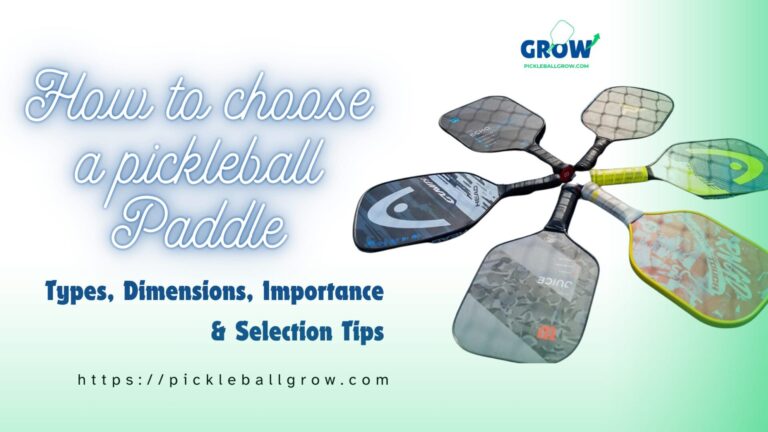
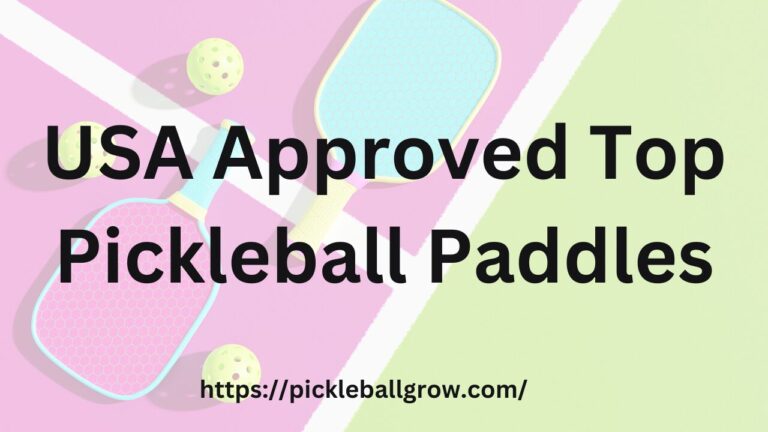
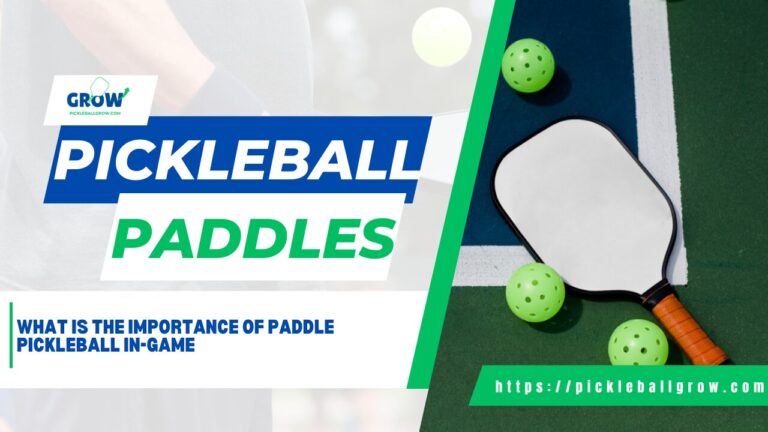
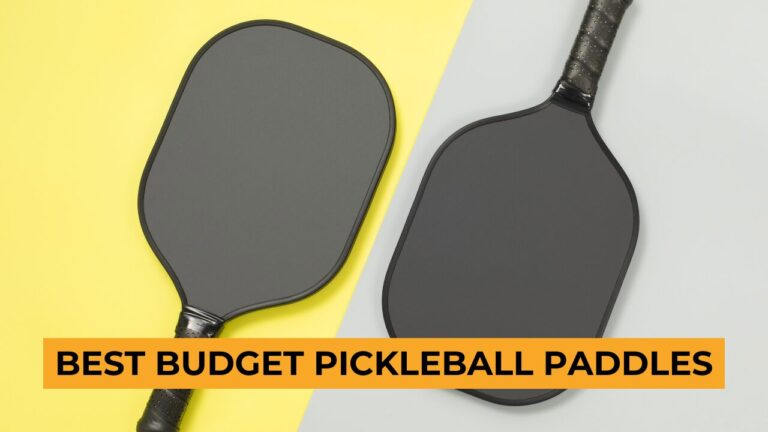

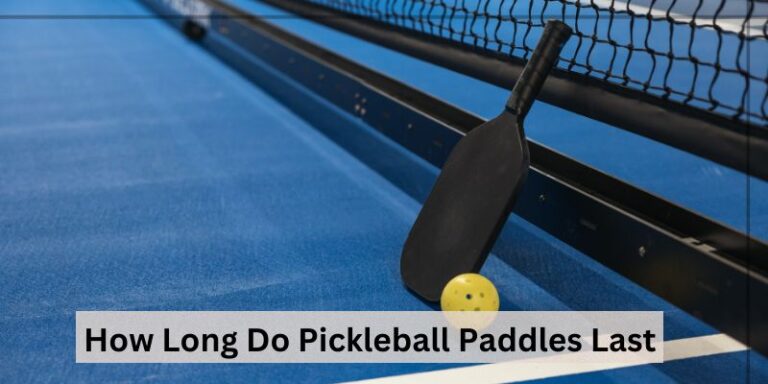
One Comment
Comments are closed.